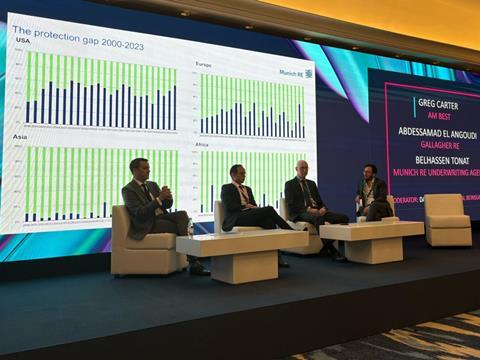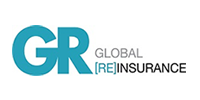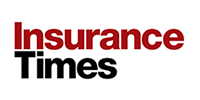Panellists from Munich Re Underwriting Agents, Gallagher Re and AM Best discussed the catastrophe reinsurance market in the Middle East and beyond.
A panel discussion on day one of this year’s Dubai World Insurance Congress (DWIC 2025) explored the evolving landscape of natural catastrophe exposure across the Middle East, Africa and South Asia (MEASA).

The speakers were: Belhassen Tonat, senior executive manager, P&C, Munich Re Underwriting Agents; Abdessamad El Angoudi, head of agriculture for EMEA and international parametric expert, Gallagher Re; and Greg Carter, managing director, analytics, EMEA & Asia Pacific, AM Best.
The protection gap – the difference between economic losses and insured losses – for this region is higher than most, and most cruelly revealed when disaster strikes.
Earthquakes and cyclones occur regularly in the Middle East. Turkey and Syria, for instance, suffered a severe earthquake in February 2023; Oman has been battered by cyclone activity in recent years; and even Dubai in 2024 suffered from the effects of sudden and heavy rains.
Historically, local insurers’ property reinsurance buying in MEASA has leaned heavily on proportional treaties rather than excess-of-loss structures typical of catastrophe risk.
Following recent loss events, a shift toward non-proportional buying is underway, a necessary step as – amid exponential economic development plus more regular extreme weather – nat cat exposures become more pronounced.
A region exposed but underinsured
The discussion opened with a clear message: the protection gap in MEASA is severe.
While globally insured catastrophe losses often exceed $100bn annually, the uninsured share still dwarfs payouts – and nowhere is this starker than across Africa and much of Asia.
“If you frame it in colours, it’s how to make the blue bar go up and reach worldwide levels,” said one speaker, referring to the slide in the picture with this article.
In parts of Africa, insured payouts following catastrophe events have at times been effectively zero. Even within Asia, excluding Australia and Japan, the majority of economic losses remain uninsured.
Participants agreed that while economic development across the Gulf and South Asia is accelerating, insurance penetration is struggling to keep pace, especially outside the largest corporates.
Notably, there are growing signs of improvement. Mega-projects such as Saudi Arabia’s renewable energy developments are incorporating insurance into their risk management strategies from the outset. But broader societal coverage, particularly for vulnerable populations, remains a distant goal.
Risk understanding drives market change
Recent natural catastrophe events – including Dubai’s heavy rains – have forced a re-evaluation of reinsurance structures and underwriting practices across the region. In the past, primary insurers often bought catastrophe reinsurance cover based on what their budgets allowed, rather than an accurate understanding of their exposures.
“It’s not how much I can afford to; it’s how much I need to pay and to buy,” observed one speaker, highlighting a necessary cultural shift underway.
Another noted, “Three years ago, after a catastrophe, you would increase the prices without having the proper model, without knowing anything about data.”
Today, there is a growing emphasis on improving data quality, granularity of exposure analysis, and technical risk pricing.
However, this evolution remains uneven. Some insurers are adopting better risk modelling and portfolio segmentation practices – and are being rewarded with more favourable reinsurance terms.
Others, still reliant on outdated practices, are finding themselves exposed and facing higher costs. “It’s the Wild West sometimes,” one panellist remarked.
When asked whether the market was now softening, the panel agreed that the situation was nuanced.
“I would describe the market as we’re at the late stages of a hard cycle,” said one expert.
“Rates have dipped slightly in some territories, but terms and conditions remain tight, and attachment points have not fallen significantly. In short, underwriting discipline is holding – for now.”
Climate change and emerging threats
The panel agreed that climate change is exacerbating cat risk exposures across MEASA in ways that were not fully anticipated a decade ago.
“Fifty years ago, an earthquake in Dubai would have moved some sand dunes. Today it moves the biggest concentrations of value in the world in the smallest area,” said one speaker, reflecting on the region’s rapid urbanisation and asset accumulation.
The 2024 Dubai floods were one major stress test. While insurers responded well, the event exposed gaps in modelling capabilities. “The gross losses from the flooding events exceeded probable maximum loss estimates (PMLs) because those PMLs had been modelled around quake exposure rather than flood,” one participant noted.
This was a common theme: many nat cat models in MEASA remain rudimentary, particularly for perils such as floods and cyclones. There is an urgent need for better regional data, improved catastrophe modelling and scenario analysis, the panel agreed.
In parallel, re/insurance product innovation is beginning to play a bigger role. Parametric insurance solutions, once niche, are gaining traction among corporates and governments.
“We are working together with the public sector, reinsurers and risk modellers to create very nice tools for the economy,” explained one participant.
Recent examples include Morocco’s catastrophe insurance scheme, which provided rapid payouts following a major event – a model Oman and others are now looking to replicate.
The role of government and collaboration
One of the most pressing debates centred on whether governments should intervene more directly to close the protection gap, or whether the private market should lead.
“There’s no shortage of capacity,” said one speaker. “The biggest impediment is the lack of ability to price the risk and the lack of modelling, the lack of understanding of the risk.”
Government involvement, the panel agreed, should focus on risk prevention, infrastructure investment, and data sharing, rather than acting as the insurer of last resort. “You cannot save lives with money. You need to try to prevent it from the beginning,” one participant stressed.
Examples like Spain’s Consorcio de Compensación de Seguros and the UK’s Flood Re were cited as evidence that public-private collaboration can succeed when targeted correctly.
“Everyone must contribute to alleviate this burden: governments, regulators, insurers, and reinsurers,” said another speaker.
A joined-up approach across the full risk management value chain – from infrastructure planning to insurance innovation – will be key.
Encouragingly, momentum is building.
“We need to be ambitious… levelling up the resilience of societies,” concluded one participant, arguing that with the right partnerships, MEASA could not only close its protection gap but also become more of a model for resilience in an era of climate volatility.










No comments yet